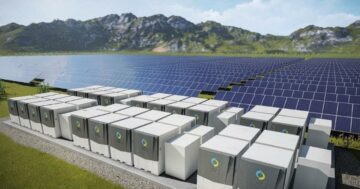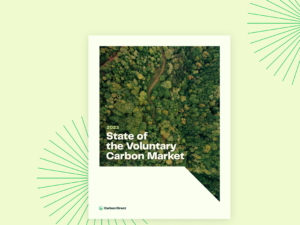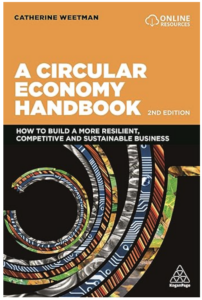
Suzanne Fallender, vice president of Global ESG at Prologis, the world’s largest logistics real estate company, is an optimist who views the complex, rapidly changing regulatory landscape as a chance to drive good decision-making across the company — not a reporting nightmare.
With $209 billion of assets under management, Prologis is subject to not only the impending U.S. Securities and Exchange Commission’s climate disclosure requirements and the European Union (EU)’s Corporate Sustainability Reporting Directive, but also the EU’s Sustainable Finance Disclosure Regulations.
Fallender joined Prologis from the tech sector, where she worked as global director of corporate sustainability at Intel Corp. Her approach to the new regulations is to accelerate what Prologis was already doing — integrating ESG into its business strategy and decision-making while partnering with different teams internally to invest in and improve data systems.
“The importance of setting goals and integrating sustainability functions across the company, so that you’re tying those two to your core business strategy, is really important to us,” she said.
Here’s Fallender’s advice for preparing for the new regulations.
Identify which teams need to internally align
To get ahead of the curve before the rules take effect, the ESG, energy, accounting, operations, IT and risk management teams at Prologis got together to review their data and management systems, identify gaps and plan for how they will meet the new requirements.
The ESG team’s collaboration with accounting has been especially critical for standardizing and prioritizing the metrics the company will report across the various disclosure frameworks. Beyond aligning on core metrics, bringing the team leads together “has been really good [for] the internal relationship piece and ‘mutual learning,'” said Fallender. “Our ESG team knows more [about] the metrics and the need for support, whereas our operations teams brought data process expertise, and the accounting team [brought important] perspective about internal audits.”
The teams had collaborated before, but preparing for the regulations and responding to increasing investor and customer data needs has taken collaboration to a higher level.
Invest in data management and IT systems
Prologis spends a lot of time on data, transparency and data management systems because it drives much of what the company does, said Fallender. The company created a “data lake,” or central data repository that can “pull or push data” from various internal and external sources, ensuring that they are interoperable.
Involving the IT team in decision-making has been important, Fallender said, because it can be difficult to sort through the many software options for managing ESG data. Fallender also found it helpful to discuss potential future needs for data management because she’s learned that investing in a tool to meet your immediate needs may leave you soon searching for a new tool when your goals change.
Get creative when addressing Scope 3 data gaps
Prologis is keen to automate data collection, especially for Scope 3 emissions, which are its biggest data gap. The company set a net-zero goal for operations by 2030 and its value chain by 2040, and with Scope 3 emissions accounting for 99 percent of the company’s greenhouse gas footprint, Prologis has a lot of work to do.
Customer energy use in the 1.2 billion square feet of warehouses, distribution centers and other logistics facilities that Prologis owns, operates and develops comprises 75 percent of its Scope 3 emissions. The remainder is embodied carbon in construction building materials. Accessing customer energy data is tough, especially because Prologis, headquartered in San Francisco, operates in 19 countries with different management and lease structures.
To more easily access that data, and close its Scope 3 gap, Prologis is working toward “green lease” language and changing utility metering practices. Green leases contain language about sharing data and other provisions designed to align tenant and landlord interests around energy efficiency and water conservation. “It’s a multiyear process to continue to automate that data to get away from some of the manual data collection tasks, such as asking customers to share it,” said Fallender.
Use your core business goals to drive your approach
Without strong goals to guide data collection and management, the task can seem overwhelming. At Prologis, “we’ve come at this from [the perspective of], how does all of this work help us create value for the customers?” Fallender said. “We don’t make these decisions in a bubble.” Prologis relies on customer advisory boards to ensure it gets their feedback.
For example, when Prologis set its net-zero goal, Fallender and others helped people across the organization understand the twin goals of the commitment — both reducing Prologis’ carbon footprint and helping customers on their decarbonization journey. Prologis customers were asking for solar panels and EV charging stations, and it wasn’t always possible to install those, Fallender said. To help implement the company’s net-zero goal, Prologis changed its construction guidelines to include solar energy and charging station installation capabilities in all new projects.
As Prologis builds its data management systems, its net-zero goal and customer-centered approach are driving its approach. That’s why Fallender doesn’t mind the new regulations’ “messiness,” or the “hockey stick rate of change in increased attention and criticism,” as she puts it. “I think all of that means that we are changing the conversation in a meaningful way.”
- SEO Powered Content & PR Distribution. Get Amplified Today.
- PlatoData.Network Vertical Generative Ai. Empower Yourself. Access Here.
- PlatoAiStream. Web3 Intelligence. Knowledge Amplified. Access Here.
- PlatoESG. Automotive / EVs, Carbon, CleanTech, Energy, Environment, Solar, Waste Management. Access Here.
- PlatoHealth. Biotech and Clinical Trials Intelligence. Access Here.
- ChartPrime. Elevate your Trading Game with ChartPrime. Access Here.
- BlockOffsets. Modernizing Environmental Offset Ownership. Access Here.
- Source: https://www.greenbiz.com/article/case-study-how-prologis-turning-sustainability-regulatory-squeeze-opportunity
- :has
- :is
- :not
- :where
- 1
- 1.2 billion
- 19
- 2030
- 75
- a
- About
- accelerate
- access
- accessing
- Accounting
- across
- addressing
- advice
- advisory
- ahead
- align
- aligning
- All
- already
- also
- always
- an
- and
- approach
- ARE
- around
- AS
- Assets
- At
- attention
- audits
- automate
- away
- BE
- because
- been
- before
- Beyond
- Biggest
- Billion
- both
- Bringing
- brought
- bubble
- Building
- Building Materials
- builds
- business
- business strategy
- but
- by
- CAN
- capabilities
- carbon
- carbon footprint
- case
- case study
- Centers
- central
- chain
- Chance
- change
- changed
- changing
- charging
- charging stations
- Climate
- Close
- collaborated
- collaboration
- collection
- come
- commitment
- company
- Company’s
- complex
- comprises
- CONSERVATION
- construction
- contain
- continue
- Conversation
- Core
- Corp
- Corporate
- countries
- create
- Create Value
- created
- Creative
- critical
- criticism
- curve
- customer
- customer data
- Customers
- data
- Data Lake
- data management
- decarbonization
- Decision Making
- decisions
- designed
- develops
- different
- difficult
- Director
- disclosure
- discuss
- distribution
- do
- does
- Doesn’t
- doing
- Dont
- drive
- drives
- driving
- easily
- effect
- efficiency
- Emissions
- energy
- energy efficiency
- energy use
- ensure
- ensuring
- ESG
- especially
- estate
- Ether (ETH)
- EU
- European
- european union
- EV
- example
- exchange
- expertise
- external
- facilities
- feedback
- Feet
- finance
- Footprint
- For
- found
- frameworks
- Francisco
- from
- functions
- future
- gap
- gaps
- GAS
- get
- Global
- goal
- Goals
- good
- Green
- greenhouse gas
- guide
- guidelines
- had
- headquartered
- help
- helped
- helpful
- helping
- her
- higher
- How
- HTTPS
- i
- identify
- immediate
- impending
- implement
- importance
- important
- improve
- in
- include
- increased
- increasing
- install
- installation
- Integrating
- Intel
- interests
- internal
- internally
- interoperable
- into
- Invest
- investing
- investor
- IT
- ITS
- joined
- journey
- jpg
- Keen
- lake
- landlord
- landscape
- language
- largest
- Leads
- learned
- learning
- Leave
- Level
- logistics
- Lot
- make
- management
- managing
- manual
- many
- materials
- May..
- meaningful
- means
- Meet
- Metrics
- mind
- more
- much
- multiyear
- mutual
- Need
- needs
- net-zero
- New
- of
- on
- only
- operates
- Operations
- Opportunity
- Options
- or
- organization
- Other
- Others
- our
- owns
- panels
- partnering
- People
- percent
- perspective
- piece
- plan
- plato
- Plato Data Intelligence
- PlatoData
- possible
- potential
- practices
- preparing
- president
- prioritizing
- process
- projects
- Push
- Puts
- rapidly
- Rate
- RE
- real
- real estate
- really
- reducing
- regulations
- regulatory
- regulatory landscape
- relationship
- report
- Reporting
- repository
- Requirements
- responding
- review
- Risk
- risk management
- rules
- s
- Said
- San
- San Francisco
- scope
- searching
- sector
- Securities
- seem
- set
- setting
- Share
- sharing
- she
- So
- Software
- solar
- solar energy
- solar panels
- some
- Soon
- Sources
- square
- Squeeze
- standardizing
- station
- Stations
- Stick
- Strategy
- strong
- structures
- Study
- subject
- such
- support
- Sustainability
- sustainable
- Systems
- Take
- taken
- Task
- tasks
- team
- teams
- tech
- tech sector
- tenant
- that
- The
- their
- These
- they
- think
- this
- those
- Through
- time
- to
- together
- tool
- tough
- toward
- Transparency
- Turning
- twin
- two
- u.s.
- U.S. Securities
- under
- understand
- union
- us
- use
- utility
- value
- various
- vice
- Vice President
- views
- was
- Water
- Way..
- we
- were
- What
- when
- whereas
- which
- while
- WHO
- why
- will
- with
- Work
- worked
- working
- world’s
- you
- Your
- zephyrnet










